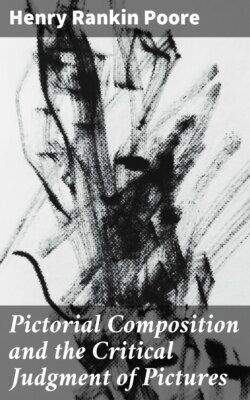Читать книгу Pictorial Composition and the Critical Judgment of Pictures - Henry Rankin Poore - Страница 16
На сайте Литреса книга снята с продажи.
BALANCE BY GRADATION
ОглавлениеTable of Contents
Gradation will be mentioned in another connection but as a force in balance it must be noticed here. It matters not whither the tone grades, from light to dark or the reverse, the eye will be drawn to it very powerfully because it suggests motion. Gradation is the perspective of shade; and perspective we recognize as one of the dynamic forces in art. When the vision is delivered over to a space which contains no detail and nought but gradation, the original impulse of the line is continued.
Gradation, as an agent of light, exhibits its loveliest effect and becomes one of the most interesting and useful elements of picture construction.
As a force in balance it may frequently replace detail when added items are unnecessary. [pg 59] In “Her Last Moorings” the heavy timbers, black and positive in the right foreground, attract the eye and divide the interest. The diversion from the hulk to the sky is easy and direct and forms the natural axis. A substitution for the foreground item is a simple gradation, balancing a like gradation in the sky.
The measure of light and dark when mixed is tonically the same as the gray of the gradation—but its attraction is weakened.
